Japan - 1
Going to Japan has been on my bucket list for a
long time. This year the opportunity to go there arose and we planned a 2 week holiday to
Japan and (South) Korea, 10 days in the former for tourism and 5 days in the latter, where
the 2023 World Curling congress was being held.
We flew with Emirates from Riyadh via Dubai to Tokyo Narita. On arrival we collected Japan SIMs for our phones and our pre-paid Japan Rail passes. The airport was a 45 minute rail journey to Tokyo Central station and the hotel was a 10 minute taxi ride from there. The time difference was 6 hours from Saudi time so although we had been travelling for 17 hours, almost a full day had passed and it was bedtime on arrival. The first thing we noticed (or actually didn’t notice as the taxi drove past it once) was that the hotel was in a tower block, the entrance was an unremarkable doorway and the hotel was but one of a number of premises within. The hotel lobby and restaurant was on floor 4 and the bedrooms were floors 5 to 9, with offices below, and I believe private apartments above. There were separate lifts to each sector of premises, and the hotel had a discrete lift which served its bedrooms. This was soon to be a familiar feature of Tokyan location hunting. Space is at a premium in this city of 14 million, and high-rise living is the norm. We also discovered that there were extensive shopping complexes in tower blocks, and also underground. One evening we had a meal in an Italian restaurant, google maps took us to the venue, and the restaurant, tastefully decorated with faux wood panels, indoor plants and wall murals showing Venetian scenes was on the 12th floor. On our way up to it, we stopped at another Italian restaurant on a lower floor, and then a Thai one before arriving at our destination. All a new experience for us.
On our two full days we set about sightseeing and the highlights were diverse. We wanted to see the Imperial Palace gardens, but the ticket process was as ancient as the dynasty itself – two tours were advertised daily and you had to appear in person 2 hours before the tour and queue for tickets. No online or phone bookings. This process would take up too much of our time so we contented ourselves with walking round the outside of the palace complex parks. Nice enough, but not the treasures within.
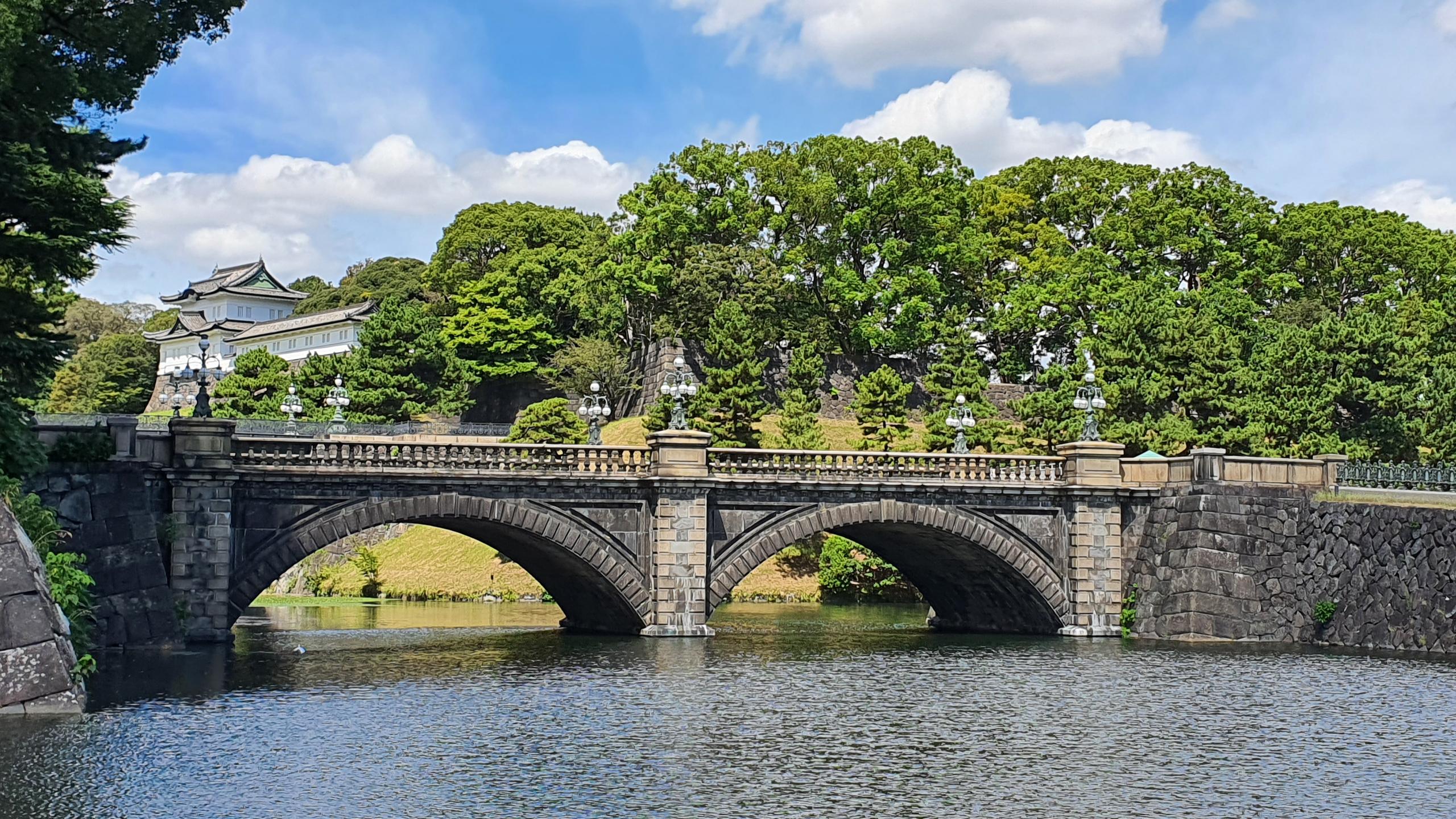
Imperial Palace park, Tokyo
Much better was the oldest temple in the city, Senso-ji in the Asakusa district of the city. As this was away from the city centre, there were low-rise properties in the area and even a street market. Here all sorts of sushi and other traditional Japanese foods were available to take away. The temple was busy but free to visit and very beautiful.
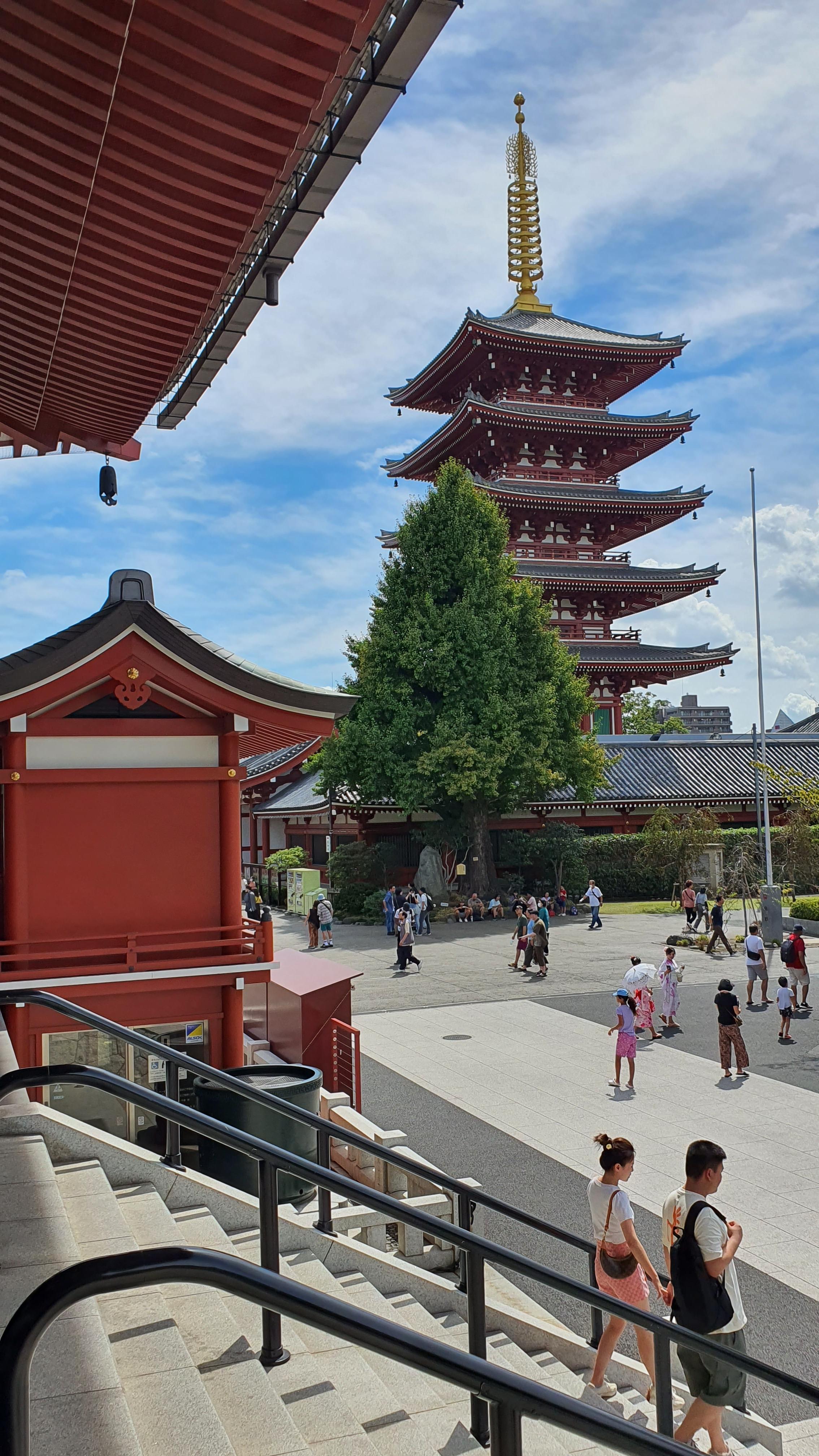
Senso-ji temple
Its tiny garden was lovely too, the correct classical selection of trees and bushes, ponds with Coi carp and little bridges. In the temple forecourt were dozens of automatic machines which dispensed fortune slips for 100 Yen (55p, exchange rate was £1 – 186 ¥). Mine was pretty ambivalent, and if ones fortune slip was thought to be bad luck you could fold it up and tie it to a wire and the bad luck fortune would supposedly be left behind when you moved on. Before entering the temple you had to wash your hands with water from a fountain, and the method of doing so was by collecting water via a long ladle and somehow pouring it over both hands. Why don’t you try that at home and see how difficult it is!
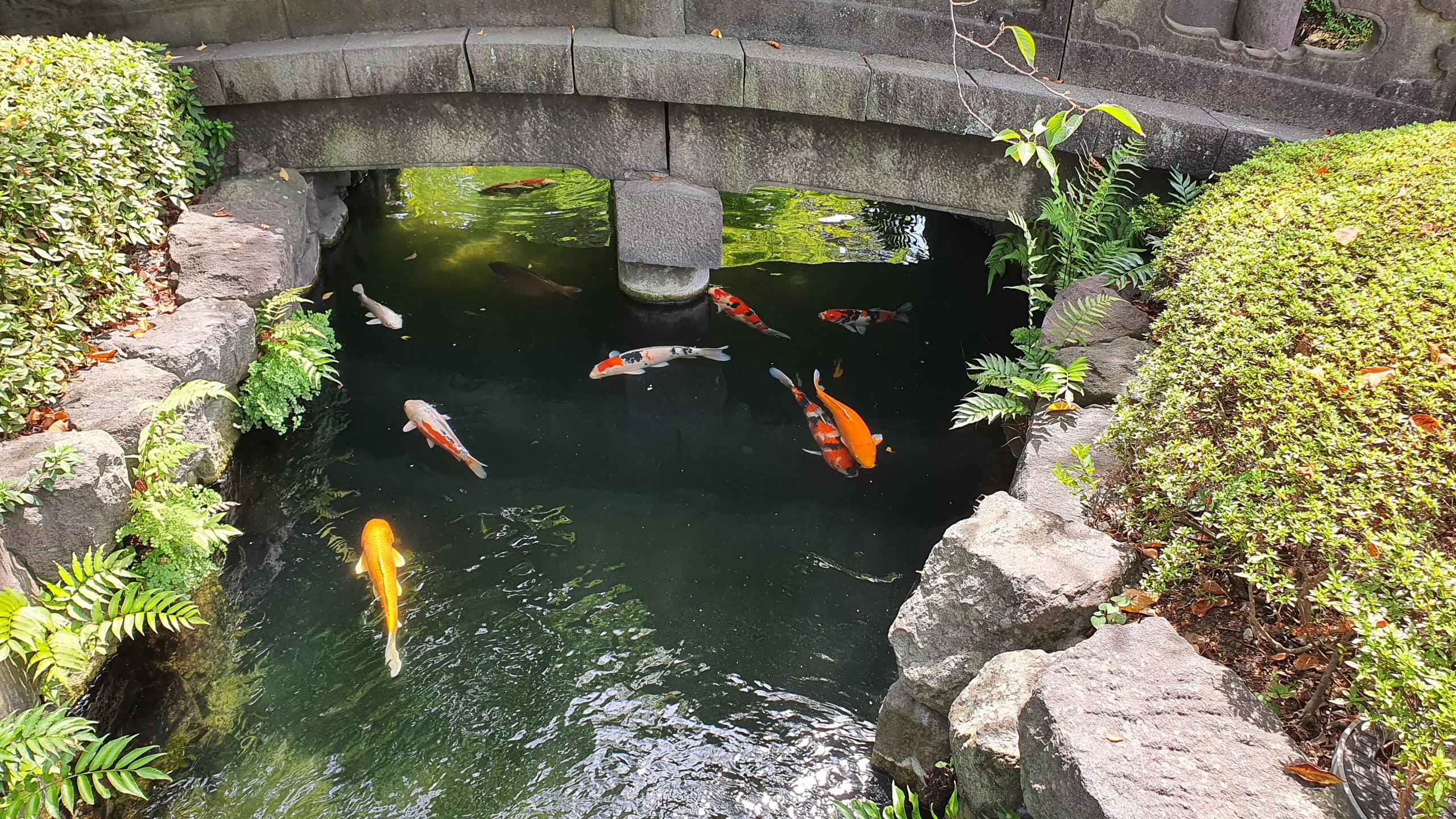
Senso-ji temple garden pond
We had a river cruise down the Sumida to the Odaiba island where a one-fifth-size replica of the Statue of Liberty can be found amid seafront gardens. It is clearly an escape venue for Tokyans and our boat was invaded by a school party of teenage girls, all smartly resplendent in school uniforms even on a weekend day. Odaiba is the ideal spot to see the sun setting behind the skyscrapers of the city, but we didn’t hang around there long enough to see it, another early bed was calling!
Interestingly we saw no cats at all in Japan. Not a single one. The Japanese are cat lovers, there are (according to Mr Google) 8.8 million cats in the country. No street cats (a common sight in Riyadh, scavenging from bins and pouncing on unsuspecting plastic bags), nor even temple or park cats. So where are they all? My guess is that they are all domestic cats and kept indoors. Dogs were more common, with people often seen with (usually small breed) dogs on leads. We also stumbled over – and went into – a dog café. These are starting to find popularity in the UK, but they are common in Japan. This was my first experience of a dog café, you paid a fixed amount to enter, and then paid for extended time, measured in 10-minute intervals. Inside, a couple of dozen small dogs or puppies were roaming free. You could buy dog treats to feed the dogs, and this naturally attracted the dogs to you. The rules were that you mustn’t feed dogs that were wearing vests, they were either on diets or had had enough to eat at that time. This didn’t stop them coming to food holders and pestering them for more. There were a couple of minders, young women who policed the amount the dogs ate, made sure you were not feeding the wrong dogs, telling you to not pick up cute dogs and changing their nappies. Yes, many were wearing nappies so there was no risk of accidental slips or uncleanliness.
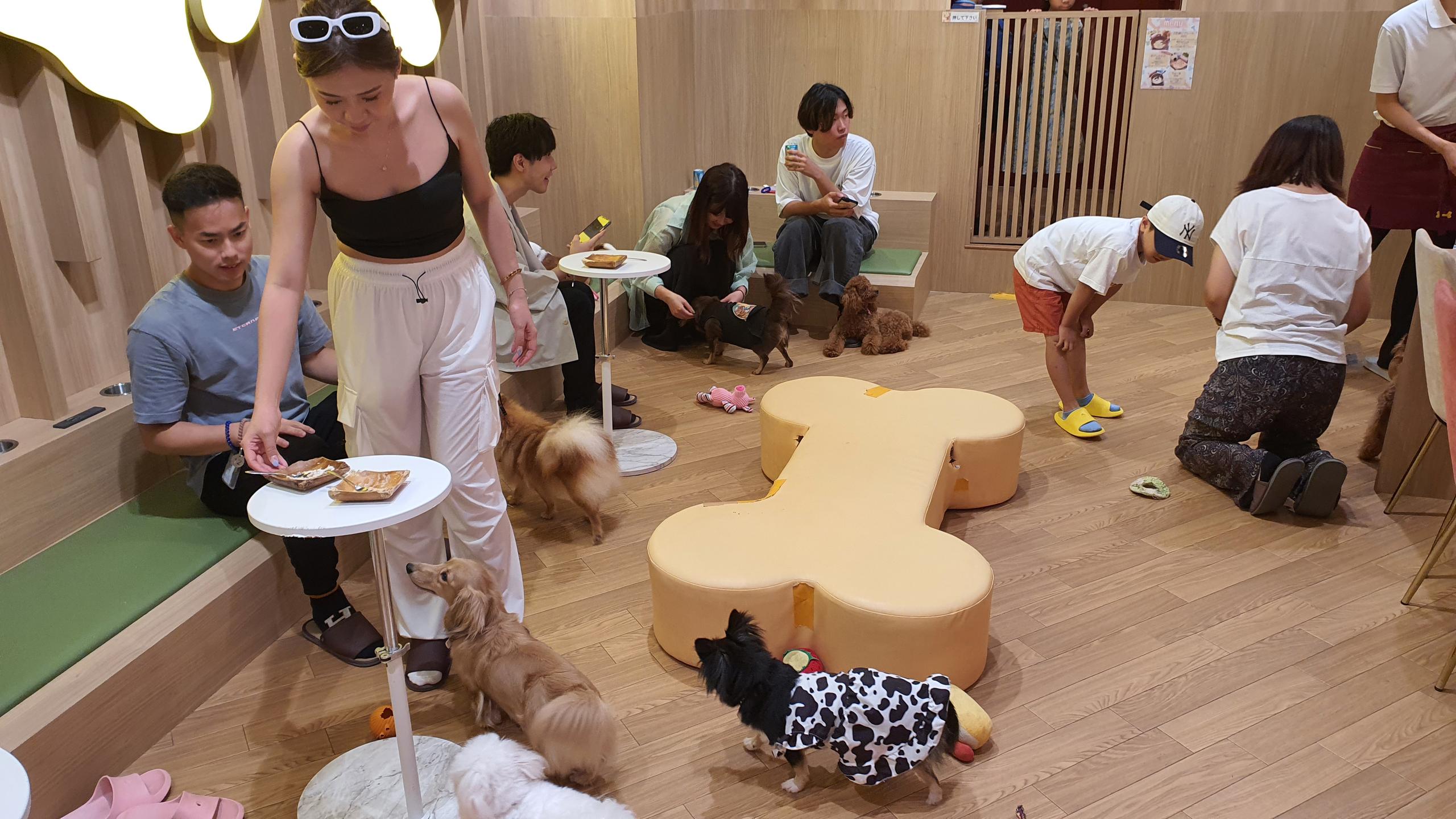
A dog cafe
In fact, Japan is an exceedingly clean country, we saw no litter or graffiti. One day I had bought a takeaway drink cup and once I had finished I looked for a bin to put it into. But I couldn’t find one and asked some locals where I should look. This caused merriment on their side as I had insufficient Japanese to ask the question, and they had insufficient English to understand. So I resorted to sign language and eventually they got the message and gesticulated that there was a bin some 2 streets away. This didn’t make sense as there was no litter anywhere and yet very few bins either. Our ever-helpful hotel staff later explained that Japanese people carry trash bags with them and take everything home and segregate waste for recycling there. Aha!
One of the iconic tourist sights in Japan is of course Mount Fuji, typically with a bullet train in the foreground. We took that rail route south from Tokyo, however Fuji was 100% cloudbound and invisible. This, I found later is the normal status of the mountain; great patience and luck are required for such a view to be seen. So Fuji joins Everest and Tinto as peaks I have seen as a cloud*. Actually, we did have a glimpse of the peak of Fuji from the plane as we approached Narita but that was just the top few hundred feet above the cloud line. (*There’s a saying in Biggar “If you can’t see Tinto, it’s raining; and if you can see Tinto then it’s going to rain!”).
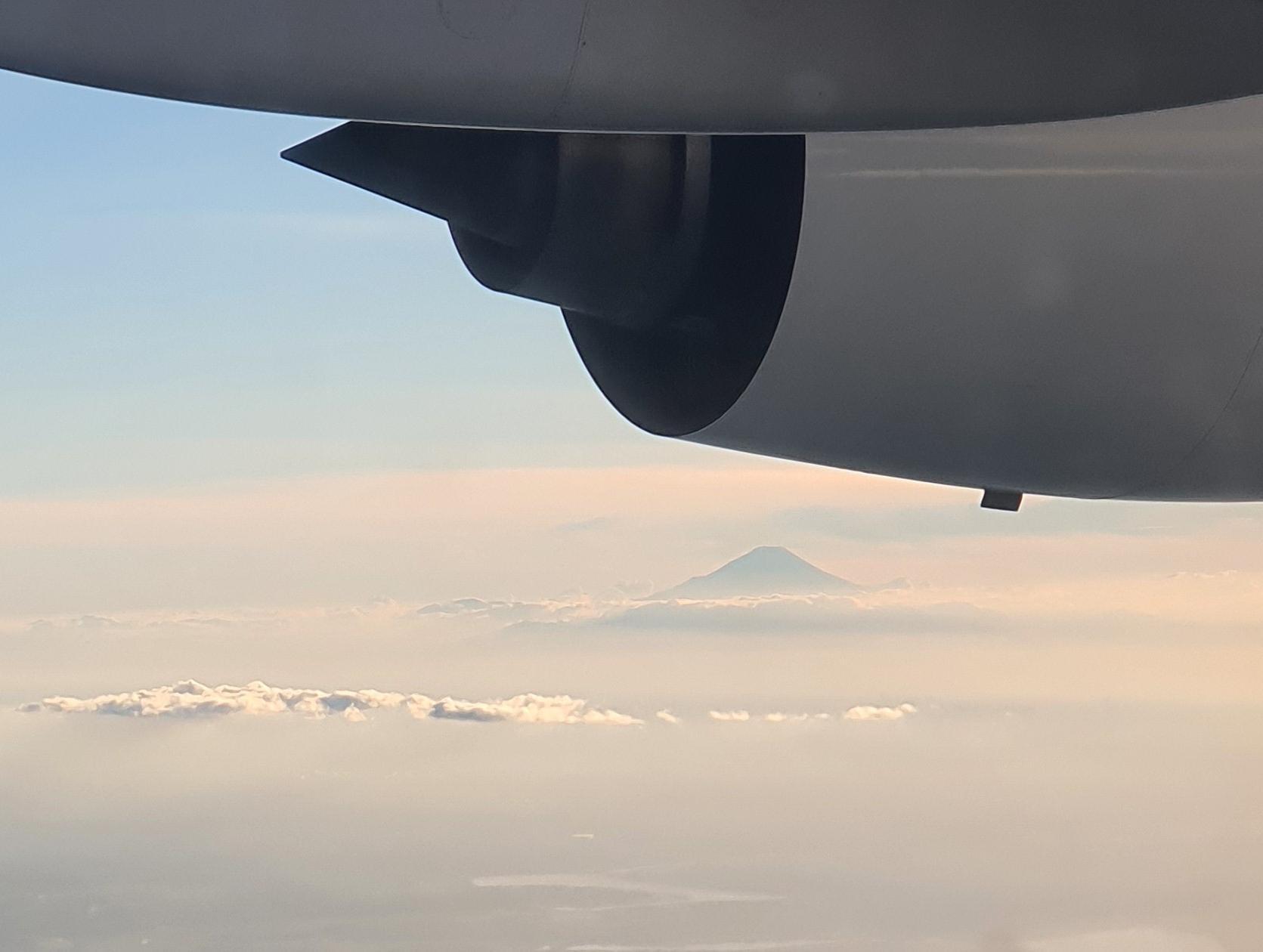
Not the classic view of Mt Fuji!
After Tokyo we had a couple of nights in an “onsen” hotel at Yudanaka near Nagano. Onsen is the term for a natural hot-springs spa. As Japan is a volcanic island chain there are hundreds of these onsen in the country. The rules are simple – stay in as long as you can, and wear nothing. The water temperature is about 42 degrees C, (107 F) and one can’t stay in for too long otherwise you slowly cook. You cool down with cold showers or a plunge pool, sauna style. Our hotel had 3 pool rooms, one for males, one for females, and one which could be reserved by families. This hotel was also a traditionally constructed building, mostly from natural materials, and the bedroom had sliding panel walls and a futon bed. We had to wear kimonos (supplied) when we were in the dining room. The meals were traditional Japanese fare, with multiple small courses in a similar style to Spanish “tapas”. Except eaten with chopsticks, of course, and spoons were provided for “ramen” soups.
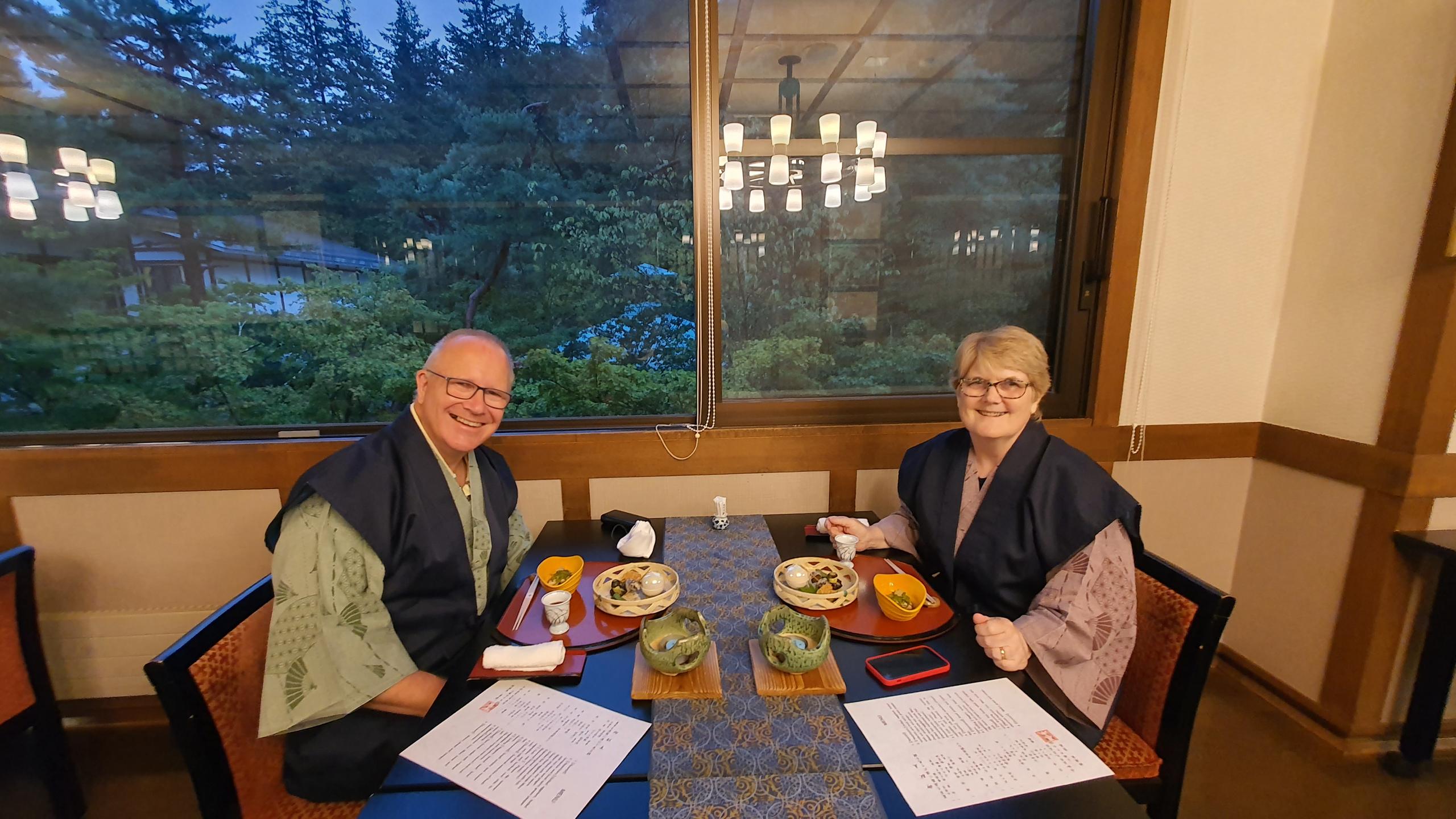
Dining - traditional Japanese style
Nearby the onsen hotel was one of Japan’s premier attractions – the Snow Monkey park. I had seen this years ago on one of Sir David Attenborough’s wildlife TV programmes, and its an area of open air hot spring pools where a monkey troupe has copied human behaviour and they regularly bathe in the hot pools. Its better represented in winter when the monkeys wear their whiteish coats and there is snow on the ground, but even when we were there in early September, the brown macaques still loved to dip in and out of the pools. I stuck a finger in one pool near the spring source, and it was a lot hotter than the onsen standard. As this was a wild troupe, they were free to come and go and there was no absolute guarantee there would be any there. The park’s rules are, as the monkeys are wild, don’t touch them and try and stay 1 metre distance. We need not have worried about not seeing any monkeys out of the snow season, there were over 50 of them there, ages ranging from old to newborn and they were very used to having humans close-up, and didn’t shy away from us at all. Much better than any zoo!
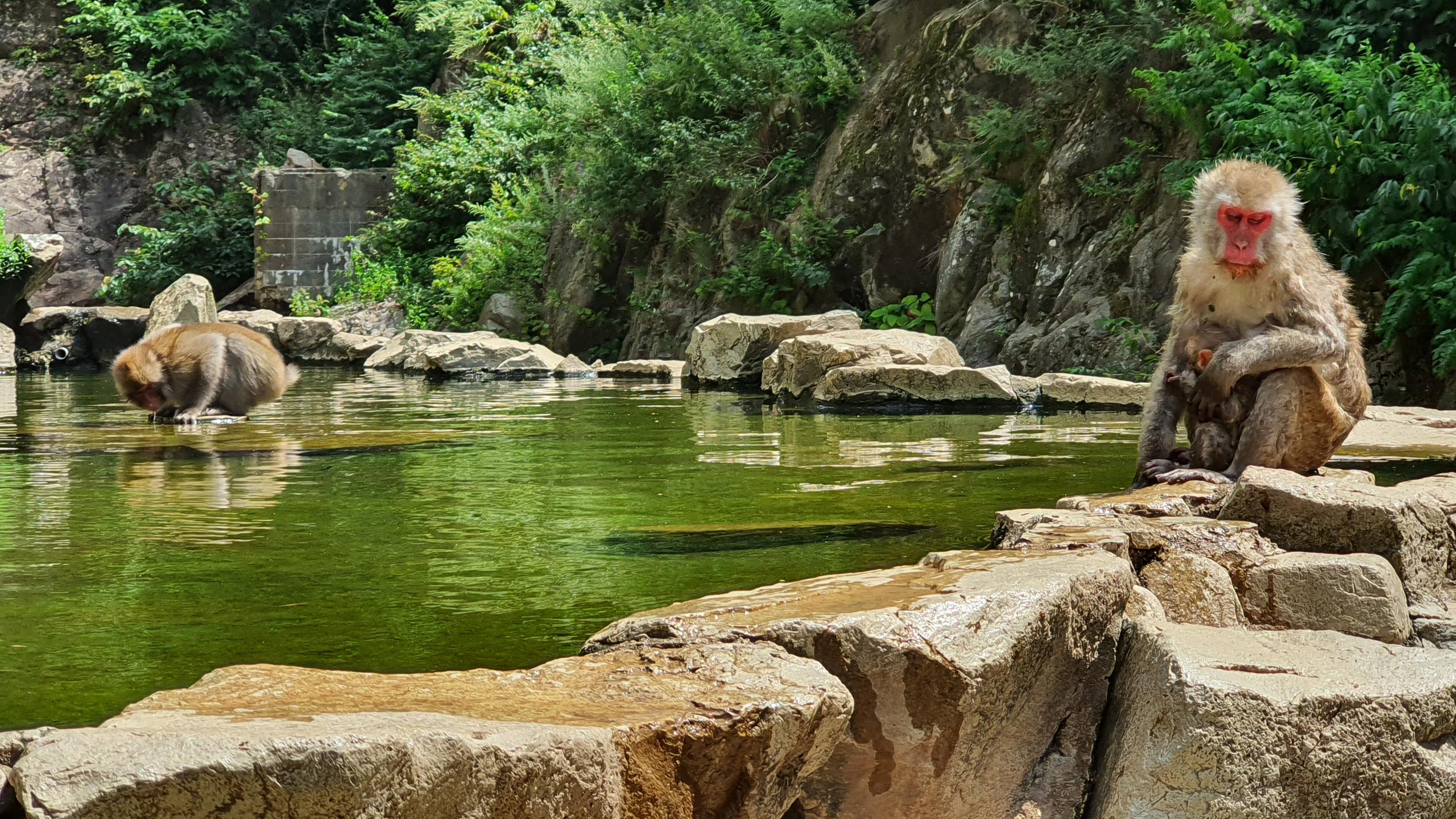
Snow monkeys in late summer
Not far from Nagano is Karuizawa which is the site where curling was played in the 1998 Winter Olympics, the first Olympics to have curling as a full sport since 1924. We arrived there unannounced and the ice was laid and beginners coaching was in progress. There was a small permanent museum exhibition of the history of curling and the 1998 Olympics, which was fortunately bilingual with Japanese and English text. I was able to get an hour on the ice to practice for 800 ¥, having proved to the ice staff that I wasn’t a novice!
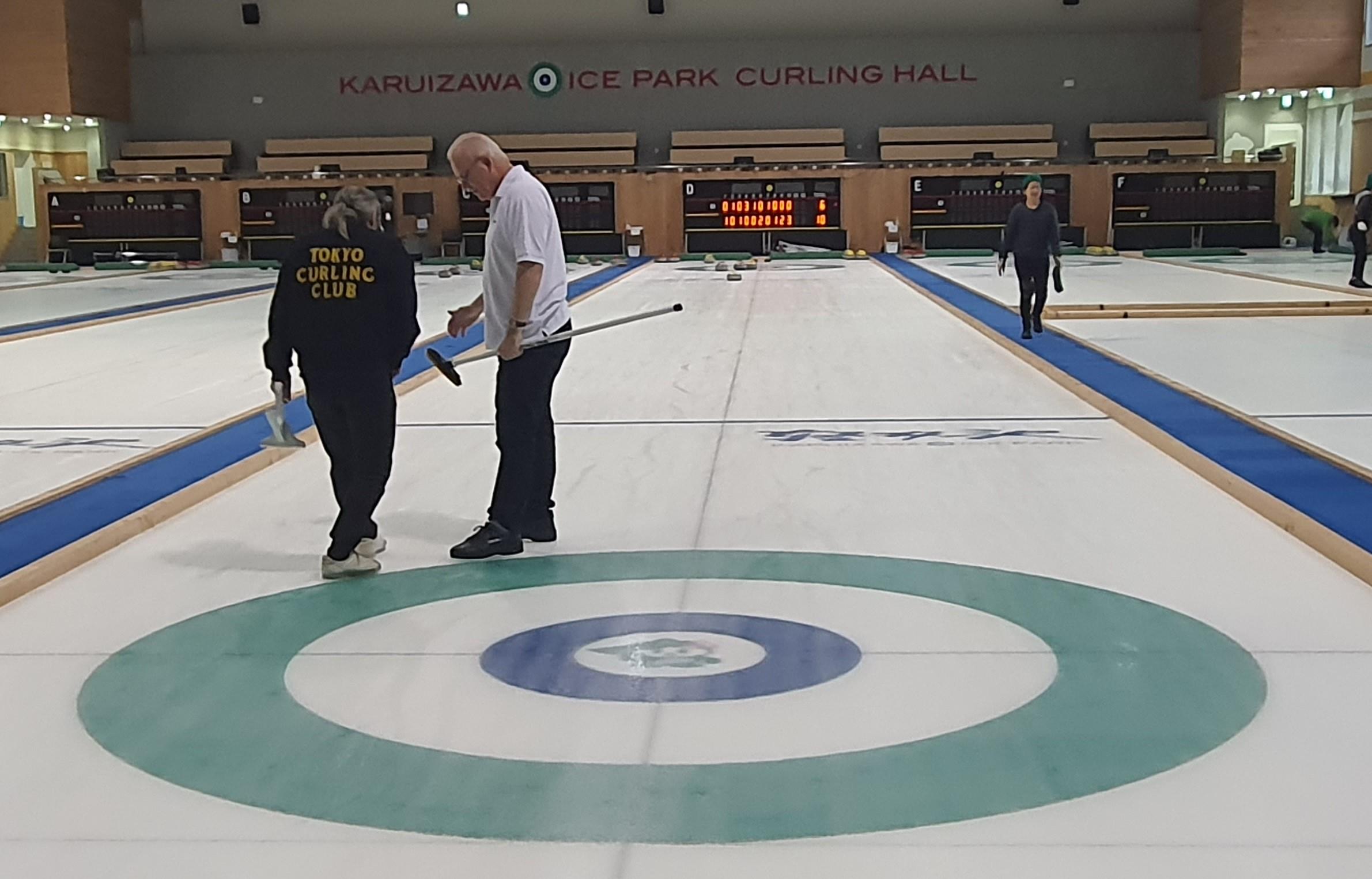
Karuizawa curling centre
As with much in Japan, the entry was by ticket from a cash-only machine which the staff helped me navigate to get the correct payment. This was a feature that surprised me, in many ways Japan is a very advanced society with modern transport and systems, robotics and such, but it is still a cash-dominated country. Card payment is possible in most settings, but we noticed and experienced a constant use of notes and coins for everyday payments. One of my yardsticks for rating a country’s efficiency is by the state of the banknotes, crisp and clean invariably indicates a high level of cleanliness and orderliness , and Japan clearly proved that point.
To be continued…
